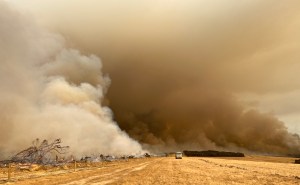Canada’s response to the COVID-19 pandemic has eclipsed the needs of sex workers across the country. While the act of prostitution is not considered a crime under the 1984 prostitution law, public solicitation is a criminal offence.[1] Consequently, many sex workers in Canada either do not qualify for the federal government’s Canadian Emergency Response Benefit (CERB) or they are afraid to apply.[2] The conception that sex work in Canada is decriminalized is a misunderstanding. There are provisions in the Criminal Code that make sex workers immune from prosecution, but not immune from arrest.[3] Thus, according to Jenn Clamen, national co-ordinator of the Canadian Alliance for Sex Work Law Reform, “sex work is criminalized for everybody.”[4] This covert criminalization of prostitution is one of the many obstacles for sex workers in accessing CERB. According to Clamen, “CERB only allows for people who are documented to apply for it, because it means you have to file your taxes next year, it means you have to be in the tax system, it means you have to be accounted for in that way.”[5] The Canadian Government has delegated upwards of forty-million dollars to the support of shelters, sexual assault centers, and organizations serving women harshly affected by COVID-19.[6] This money has not made it into the hands of sex workers.[7]
Canada’s historical ignorance about and stigmatization of sex work explains the lack of action taken by the government amidst the COVID-19 crisis. Sociologist John Lowman, in regards to his research on prostitutes in Vancouver, coined the term “discourse of disposal” to characterize “ongoing attempts of politicians, police, and residents’ groups to ‘get rid’ of street prostitution from residential areas.”[8] Catalyzed by Vancouver’s Expo ’86, street prostitutes were relocated from Vancouver’s West End to their current concentrated location in the Downtown Eastside, which Lowman describes as an “unregulated and mostly unmonitored area of poorly lit back alleys.”[9] Additionally, Lowman explains that“this discourse of disposal has formed an important part of the ideological context in which male violence against women is played out,” exacerbated by the quasi-criminalization of sex work.[10] Due to Canada’s precarious laws surrounding prostitution, sex workers have found themselves in unreliable relationships with the police forces and governments alike; they are alienated from protection while being vulnerable to potential danger.[11] Although Lowman’s research is focused on Vancouver in the 1980s, this insecure relationship between sex workers and government officials and police forces is now more prevalent than ever, especially under the “new normal” that is the COVID-19 pandemic.
A study conducted for Justice Canada in 1996 revealed that at least fifty women who identified as prostitutes were murdered in Vancouver between 1982 and 1994 (this number does not include missing persons who were later identified as murder victims).[12] In 2002, multiple murder charges were laid against rural pig farmer, Robert Pickton; Pickton abducted and murdered over sixty street-level sex trade workers, predominantly Indigenous women.[13] Many cases, however, were left unsolved after his conviction. Since the mid-1980s, concerned residents of Vancouver’s downtown East Side have urged the police to investigate these disappearances.[14] After years of reluctance on behalf of the police department and city council, a formal investigation was finally launched in 1999.[15] The prostitute is conceived as a “spectacularly monstrous” and “contagious” body. Such notions seemingly justify their prescribed invisibility within the streets of Vancouver and Canada at large.[16] This historical and consistent failure to protect sex workers from assault and murder is not unique to Vancouver and persists within today’s climate. The discourse of disposal speaks to the discourse of transience in a perpetuating cycle wherein sex workers, coded as itinerant, are coerced into constant dislocation, which is then used against them to label them as itinerant.[17]
The Vancouver police’s reluctance to investigate the disappearances that occurred in the latter part of the twentieth-century was justified by the belief that street-level prostitutes live itinerant lifestyles and are thus more likely to disappear. For instance, in a 1999 Globe and Mail article, journalist Jane Armstrong prefaces an otherwise sympathetic report with the following characterization: “They lived the transient lifestyle of the hard-core underclass… Compared with most of the population, a prostitute’s life is unpredictable… she can be hard to find.”[18] Rhetoric like this contributes to a mainstream narrative under which certain women, in certain settings, conducting certain types of business, and leading certain types of lifestyles, seem inherently prone to vanishing without a trace, the discourse of transience and disposal explains the history and ideology behind the Canadian governments’ treatment of sex workers during the COVID-19 pandemic.[19]
As mentioned above, Canada’s laws surrounding prostitution create a type of “quasi-criminalization.” Prostitution is legal, but laws surrounding prostitution make it impossible to prostitute frequently without breaking the law.[20] Lowman addresses four major ways in which this quasi-criminalization occurs, “1) It contributes to legal structures that tend to make the prostitute responsible of her own victimization, 2) It makes prostitution part of an illicit market, 3) It encourages the convergence of prostitution with other illicit markets, 4) It alienates persons who prostitute from the protective service potential of the police.”[21] Amidst the COVID-19 pandemic, the quasi-criminalization of prostitution and the lack of protection subsequently allotted to sex workers due to this legal framework is more prevalent than ever.
Susan Davies, a sex worker and advocate with the B.C. Coalition of Experiential Communities, says she’s aware of many who are still doing sex work, including a friend with three children who does sex work to top up her disability support payments.[22] “She has no choice but to go back to work to feed her kids, and put herself and all of her entire family at risk because of this unreasonable assumption that people who are on welfare or disability know how to live on that so they can make it by, while newly unemployed people are acknowledged by government as needing $2,000 a month,” Davis said.[23] According to Jelena Vermilion, executive director of Sex Workers Action Program (SWAP), those who are still working are now being surveilled and policed more heavily than before.[24] Vermilion goes on to say that “because [sex workers] are forced to work, whether indoors or on the street, what’s going to happen is they’re going to be policed even more and are liable to the new fines and potential jail time with the social distancing guidelines.”[25]
Moreover, according to Rachel Phillips, the executive director of Peers Victoria—a grassroots agency that provides support for sex workers in the area—there have been increased reports of “bad dates” in some cities, including Victoria, B.C.[26] Phillips explains that “what happens when work tends to dry up is that people take work that they wouldn’t normally take or people that have bad intentions are more likely to target people.”[27] According to Amanda (a pseudonym used to protect her real identity) an indoor sex worker in Vancouver, “[a]t this point, girls are literally booking everyone and anyone who is on their line,” eliminating the typical vetting process for safe, reliable clients.[28] “The reason that’s happening… is who knows what next is going to bring us? Who knows what’s going to happen in two weeks? Sure, they have a self-employed benefit but… we don’t know if that takes us into consideration.”[29] Amanda rents out condo units for the use of a handful of Greater Vancouver indoor sex workers or escorts. In the recent weeks that COVID-19 stipulations have overtaken society, she recalls “[meeting] so many strung-out women who are desperate, absolutely desperate.”[30] According to Phillips, the needs of many have increased without support. Those who are struggling are inherently more vulnerable to violence.[31] Phillips goes on to say that “you may be taking work you wouldn’t normally take or from people you don’t necessarily feel comfortable with or don’t know. There is a potential for sexualized violence to go up in this type of context.”[32] Additionally, she points out: “we’re seeing this example where a different sort of emergency relief is coming up and, to date, it has not addressed undocumented workers in Canada who are vulnerable.”[33]
As demonstrated by Lowman’s “discourse of disposal,” Canadian society has never done a good job protecting sex workers or providing for their needs. This lack of government outreach and protection is compounded by COVID-19 as measures continue to exclude all undocumented workers from government relief packages.[34] Victoria Scott, a sex worker in Toronto, says she is disappointed that Ottawa has not come forward with more direct help for the marginalized women in her field.[35] Scott says that sex workers are “reeling” now from the losses of income and are feeling invisible to governments.[36] In early May, physician and MP Hedy Fry hosted a virtual roundtable with more than twenty individuals and organizations in B.C. and across Canada who represent sex workers and their needs.[37] Fry recognizes that most sex workers are not eligible for CERB, CEWS, grants, or rent assistance. Fry relays in her article “Dr. Hedy Fry: Sex Workers and COVID-19” that she will be sending a detailed letter to the ministers responsible—and to the prime minister—summarizing the roundtable conversation and the policy concerns brought to her attention.[38] Due to the COVID-19 pandemic, immense national change is on the horizon. During this period of rapid legislative change, legal frameworks surrounding prostitution in Canada must be evaluated and updated to better protect and support sex workers. Right now, sex workers are invisible income earners and are unable to access the help that other workers can claim in this uncertain time. We must mobilize and ensure that Lowman’s “discourse of disposal” remains in the past and does not characterize the future for sex work or the mainstream consciousness that surrounds it.
Bella Silverman is a double major in history and art history at McGill University. Bella’s academic goal is to uncover histories that are normally concealed due to patriarchal structures and the systematic canonization of history.
Citations:
[1] Claudette Lauzon,"What the Body Remembers: Rebecca Belmore’s Memorial to Missing Women," in Precarious Visualities: New Perspectives on Identification in Contemporary Art and Visual Culture, edited by Asselin Olivier, Lamoureux Johanne, and Ross Christine, (McGill-Queen's University Press, 2008), 164.
[2] Hedy Fry, “Dr. Hedy Fry: Sex Workers and COVID-19,” The Georgia Straight, 13 May, 2020. https://www.straight.com/news/dr-hedy-fry-sex-workers-and-covid-19
[3] Hedy Fry.
[4] Hedy Fry.
[5] Hedy Fry, “Dr. Hedy Fry: Sex Workers and COVID-19,” The Georgia Straight, 13 May, 2020. https://www.straight.com/news/dr-hedy-fry-sex-workers-and-covid-19
[6] Teresa Wright, “Sex Workers say they have been left out of Canada’s COVID-19 Response,” CTV News, 19 April, 2020. https://www.ctvnews.ca/health/coronavirus/sex-workers-say-they-have-been-left-out-of-canada-s-covid-19-response-1.4902772
[7] Teresa Wright, “Sex Workers say they have been left out of Canada’s COVID-19 Response,” CTV News, 19 April, 2020. https://www.ctvnews.ca/health/coronavirus/sex-workers-say-they-have-been-left-out-of-canada-s-covid-19-response-1.4902772
[8]Claudette Lauzon,"What the Body Remembers: Rebecca Belmore’s Memorial to Missing Women," in Precarious Visualities: New Perspectives on Identification in Contemporary Art and Visual Culture, edited by Asselin Olivier, Lamoureux Johanne, and Ross Christine, (McGill-Queen's University Press, 2008), 163.
[9] Lauzon. 163.
[10] Lauzon. 164.
[11] Claudette Lauzon,"What the Body Remembers: Rebecca Belmore’s Memorial to Missing Women," in Precarious Visualities: New Perspectives on Identification in Contemporary Art and Visual Culture, edited by Asselin Olivier, Lamoureux Johanne, and Ross Christine, (McGill-Queen's University Press, 2008), 164.
[12] Lauzon. 164.
[13] Lauzon. 157.
[14] Lauzon. 157.
[15] Lauzon. 157.
[16] Lauzon. 163.
[17] Lauzon. 164.
[18]Claudette Lauzon,"What the Body Remembers: Rebecca Belmore’s Memorial to Missing Women," in Precarious Visualities: New Perspectives on Identification in Contemporary Art and Visual Culture, edited by Asselin Olivier, Lamoureux Johanne, and Ross Christine, (McGill-Queen's University Press, 2008), 165.
[19] Lauzon. 165.
[20] Ali Kaywan, Alex Mackenzie, Caroline Messiha, Nadia Soeker, Dr. Kathleen Cross, “Representation of Prostitution in Seix Canadian Newspapers: Race, Gender and Poverty,” Simon Fraser University, 30 November, 2010. http://www.sfu.ca/cmns/research/newswatch/test_folder/Representationofprostitution.htm
[21] Ali Kaywan, Alex Mackenzie, Caroline Messiha, Nadia Soeker, Dr. Kathleen Cross, “Representation of Prostitution in Seix Canadian Newspapers: Race, Gender and Poverty,” Simon Fraser University, 30 November, 2010. http://www.sfu.ca/cmns/research/newswatch/test_folder/Representationofprostitution.htm
[22] Teresa Wright, “Sex Workers say they have been left out of Canada’s COVID-19 Response,” CTV News, 19 April, 2020. https://www.ctvnews.ca/health/coronavirus/sex-workers-say-they-have-been-left-out-of-canada-s-covid-19-response-1.4902772
[23] Teresa Wright.
[24] Teresa Wright.
[25] Teresa Wright.
[26] Nina Grossman, “Sex Workers Face New Risks During COVID-19 Pandemic,” Victoria News, 3 April, 2020. https://www.vicnews.com/news/sex-workers-face-new-risks-during-covid-19-pandemic/.
[27] Nina Grossman.
[28] Nina Grossman, “Sex Workers Face New Risks During COVID-19 Pandemic,” Victoria News, 3 April, 2020. https://www.vicnews.com/news/sex-workers-face-new-risks-during-covid-19-pandemic/.
[29]Nina Grossman.
[30] Nina Grossman.
[31] Nina Grossman.
[32] Nina Grossman.
[33] Nina Grossman.
[34] Nina Grossman.
[35] Nina Grossman, “Sex Workers Face New Risks During COVID-19 Pandemic,” Victoria News, 3 April, 2020. https://www.vicnews.com/news/sex-workers-face-new-risks-during-covid-19-pandemic/.
[36] Nina Grossman.
[37] Hedy Fry, “Dr. Hedy Fry: Sex Workers and COVID-19,” The Georgia Straight, 13 May, 2020. https://www.straight.com/news/dr-hedy-fry-sex-workers-and-covid-19
[38] Hedy Fry.






